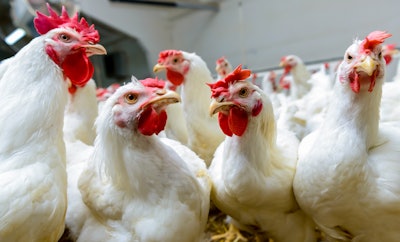
Advances in artificial intelligence (AI) and data analytics enable more precise measurement and selection of broiler traits such as growth rate and feed efficiency.
“The use of AI is having a credible impact across all of our lives on a daily basis,” explained William Herring, vice president, R&D, Cobb. “AI and algorithm development could help us measure things that we’ve had a hard time measuring before in the bird.”
For example, gait quality and leg health are major contributors to broiler livability. Broiler gait quality is traditionally measured subjectively using visual assessments.
However, using a combination of cameras and AI-generated algorithms “take the subjective to the objective that will give us a better assessment of the trait in the bird,” Herring said.
Herring will discuss the unique and vital responsibility of protein genetics companies to prioritize technology, innovation and continuous genetic progress for the future of global food security at the 2024 Chicken Marketing Summit.
A potential solution for hatchability
Mating behavior is another broiler trait that AI could potentially help improve.
“If we look across the U.S. broiler industry for the last several years, we’ve seen a continued drop in hatch,” said Herring.
“With the same approach in monitoring gait, we believe we can do the same with mating behavior – both in monitoring the quantity and quality of matings – and track that through all the way to ultimately hatch infertility.”
Attend the 2024 Chicken Marketing Summit
Make plans to attend the 2024 Chicken Marketing Summit at the Renaissance Birmingham Ross Bridge Golf Resort & Spa in Birmingham, Alabama, on July 29-31, 2024. This one-of-a-kind event will look forward to the consumer of 2035 and the issues that will impact their protein choices.
For the first time, the Summit will have two content tracks. As always, one track will focus on consumer trends of today and what will be expected in 2035 and how advancing digital technology will impact how chicken will be sold and marketed in the future. The second content track will explore how the industry will meet consumer expectations by adapting new and existing technologies to raise and process broilers utilizing fewer resources and with improved welfare, food safety and convenience.



















